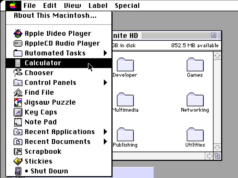
Bitcoin, the world’s first and largest cryptocurrency, has a unique feature called “halving” that occurs roughly every four years. The next Bitcoin halving event is a hotly anticipated occurrence in the crypto world, and with the next expected to take place on April 20, 2024, it’s a good time to get up to speed.
What is Bitcoin halving?
Bitcoin (BTC) halving is a pre-programmed event in the Bitcoin protocol that reduces the reward for mining new Bitcoin blocks by half. When Bitcoin was first created, the reward for mining a new block was 50 BTC. However, after every 210,000 blocks (approximately every four years), this reward is cut in half.
The first Bitcoin halving took place in November 2012, reducing the mining reward from 50 BTC to 25 BTC. The second halving occurred in July 2016, further reducing the reward to 12.5 BTC. The most recent halving happened in May 2020, bringing the current mining reward down to 6.25 BTC per block.
Why Bitcoin halving matters
The Bitcoin halving event is significant for several reasons:
Supply scarcity
Bitcoin has a finite supply capped at 21 million coins. By reducing the mining reward over time, Bitcoin’s supply becomes increasingly scarce, which could potentially drive up its value due to higher demand and limited supply.
Miner revenue
Bitcoin miners are responsible for validating transactions and adding new blocks to the blockchain. Their incentive to continue mining comes from the block rewards they receive. With each halving, the mining revenue is cut in half, which could lead to some miners leaving the network if mining becomes unprofitable.
Price speculation
Historically, Bitcoin’s price has tended to surge in the months leading up to and following a halving event. This is likely due to increased speculation and anticipation among investors and traders who believe that the reduced supply will drive up demand and, consequently, the price of Bitcoin.
Network security
Bitcoin’s mining difficulty adjusts based on the amount of computing power dedicated to the network. As mining rewards decrease, some miners may drop out, potentially reducing the network’s overall hash rate (computing power). This could impact Bitcoin’s security, as a lower hash rate makes the network more vulnerable to potential attacks.
The buzz around the upcoming halving
As the next Bitcoin halving is predicted for April, anticipation is building in the crypto community. Investors and traders are speculating on how the event might impact Bitcoin’s price and the overall cryptocurrency market. Some believe that the halving could trigger a new bull run (when investors’ demand outweighs supply), while others remain more cautious.
Additionally, miners are preparing for the reduced rewards by investing in more efficient mining equipment and exploring alternative revenue streams, such as transaction fees and other cryptocurrencies.
Ultimately, the Bitcoin halving is a unique and critical event that highlights the cryptocurrency’s scarcity and the commitment of its creators to maintaining a finite supply. After all, cryptocurrencies are volatile—and always have been.








